Change Language :
How to specify an energy chain
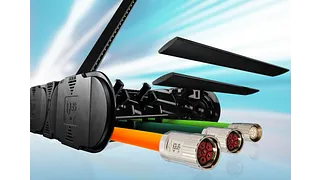
A step by step guide to your required energy chain
igus® offers numerous online tools to quickly configure and order complete energy supply modules. But what if you have no idea where to begin? This step by step guide is to help you go through each step to ensure you have all the information to complete the configurator and get the correct chain at the best price. If you are still not sure what the best options for your application, there is a form for you to complete at the bottom or you can contact one of our experts below.
Step 1. What services are being used?
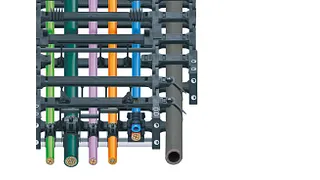
This step is to identify what services you intend on feeding through the energy chain.
- Examples such as; cables, pneumatics or hydraulics?
- How many services and also the diameter of those services?
- You also need to decide if interior separation is required? This means if you want to be able to separate the cables running the length of the chain.
Step 2. What is the travel length?
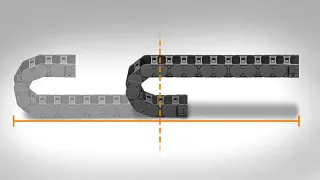
Depending on the length of travel will depend on the best suited energy chain.
- Is it end fixed or centre fixed?
- Centre fixed is the most cost effective option as you only require half the amount of chain. The upper run moves backwards and forwards over the centre point
- The fixed end of the chain is at the end of the travel.
Step 3. Are there any height or width restrictions?
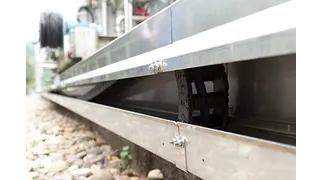
This can be looked at 2 ways.
- Is the energy chain replacing an existing energy chain? If so what are the dimensions of the existing trough?
- If this is a new application, are there restrictions within the application or on the machine?
- It is important to look at every part of the application/ machine to ensure there are no restrictions along the way.
Step 4. What environment is the energy chain going into?
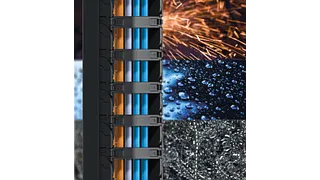
Enviromental factors can have a great impact on the seclection process of the energy chains. Examples such as;
- Extreme temperatures, either high or low.
- Harsh chemicals.
- Dirt & Swarf
- Moisture
- Conductivity
- Cleanroom
- Flammability
Step 5. What is the bend radius of the cables?
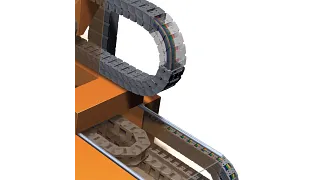
Knowing the bend radius is crucial to prevent kinking and damage to the cables. But what is the bend radius? The bend radius is the maximum radius that a cable will be bent in the application without causing damage to that cable. The image to the right shows the bend that the cables will endure. Different cables have different limitations, so it is vital that you have the correct bend information. Elements for consideration;
- The minimum bend radius. The radius below which the cable can not be bent.
- Check the manufacturers minimum bend radius for the cable.
- Are the cables in space constraints within the application?
- Can you increase the bend radius? The larger the radius, the less mechanical stress on the cables.
- What is the temperature range? Ensure you pick the correct cable for the temperature required.
Step 6. Is the energy chain being used in a vertical, horizontal or rotational orientation?
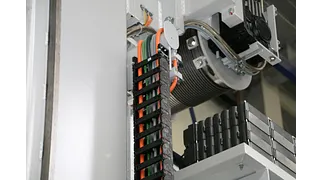
There are numerous options of orientation for the energy chains; rotational, horizontal and vertical.
- Depending on the orientation can depend on certain elements of the energy chain; such as the end brackets.
- For vertical and rotational applications you require locking brackets to ensure no movement.
- For horizontal applications you can have pivotal, allowing a degree of movement.
Step 7. Are you replacing an existing igus® energy chain? Can you see the part numbers on it?
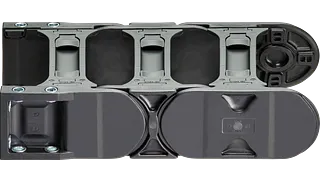
On the majority of energy chains, not just igus® ones, the part numbers can be found on both the side links and cross bars. Click on the orange arrows to expand the image.
Side links can be found along the side of the energy chain and the cross bars run across the width of the chains.
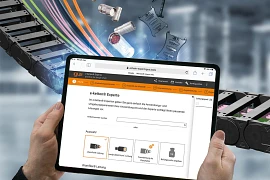
energy chain configurator
Configure your energy chain using our free tool.
Configure your e-chain®
chainflex® cable range
Find out about our large Chinflex® cable range.
Discover now